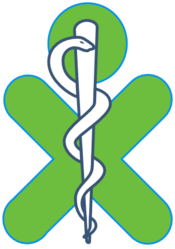Animal health/Deliverables
Translate this page with Google -español -български -中文(中国大陆) -中文(臺灣) -hrvatski -čeština -dansk -Nederlands -suomi -français -Deutsch -Ελληνικά -हिन्दी -italiano -日本語 -한국어 -norsk -polski -português -română -русский -svenska
Deliverables
The initially envisioned deliverables of the Animal Health project will be a bundle (or group of bundles) containing information that will encourage children to explore the information and learn about the relationship between animals and human health. I imagine this content grouped into sections that might also roughly correspond to target age groups.
Collection gathering
Maintain records of original sourcing so that copyright/licensing review is feasible.
Section A - "virtual petting zoo"
A wikislice of pages about domesticated animals, hopefully covering aspects of different livestock in different cultures (tie into "social studies"). This will be general in nature and rich in photographic content to appeal to the youngest age groups. Please use the Livestock page to build the list of content to be wikisliced.
Other material for this section should be readily adaptable for classroom use(e.g. written to an elementary reading level, including lesson planning materials for teachers, etc.). This is the material that should be ready to stuff into every child's "virtual book-bag"(XO laptop).
Section B - 4-H like materials
This section needs a lot of work. Various 4-H and extension web-sites need to be combed for suitable content that might be both interesting and potential useful.
Topics might include:
- the impact of animals on the environment (e.g. grazing);
- the economic value derived from of domesticated animals, other than food (e.g. draft animals for work, fibre from sheep/goats/llamas, leather from cattle, etc.);
- health issues related to animals (e.g. zoonoses, etc.).
Content could useful for illustrating principles linking into biology curriculum. This would ideally target the middle-school ages.
Section C - para- veterinary reference library
Ideally this section is composed of training aids gathered from organizations like Heifer International local affiliates or the Peace Corp. The intent will be to provide highly practical materials that will help people take better care of their animals and themselves. This would be intended for more mature students and their parents. This section is the equivalent of a "virtual reference library", it is acceptable for the reading level to be more challenging, there are many books on library shelves that are beyond a child's grade level and these represent a rich resource for children who read beyond their grade level. The materials should form a resource for further exploration and extraction of sub-sections, even though they may not contain supplied lesson plans or be immediately used within the classroom setting.
Bundle Development Process
A much clearer picture is needed of what happens after materials has been gathered (presumably mostly in English).
Pedogological review
- Are these suitable for use in the classroom?
- What additional materials should be gathered or generated?
- Teacher's guides
- Lesson Plans
- Prepared evaluation materials (e.g. quizzes)
- Classroom activities, etc.
Subject matter expert review
- Specialized localization issues
- Do the para-veterinary materials need to be tailored to specific regions?
Localization process
- Hopefully some content gathered in local languages from the target communities
Bundle generation
- Technical aspects of bundle preparation.
- Wiki Slice creation, etc.
